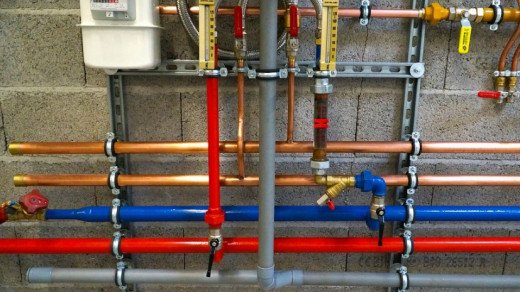Tiles on both the walls and floors are the most practical solution in any bathroom – they are hard-wearing and waterproof – but more than that they are also a beautiful element in any design scheme. Wall tiles and floor tiles come in an enormous variety of styles, sizes, colours and textures and can be used in a variety of layout patterns to give your bathroom a unique look.
Unlike the plumbing required when redesigning your bathroom furniture, installing tiling is a task that you can do yourself if you are fairly competent at DIY (or know someone else who is). All you need are a few special tools and the correct adhesive and grout for the tiles of your choice. The type of adhesive will depend on the surface to which the tiles are being applied and, naturally, on the tiles themselves, whether they are ceramic tiles, porcelain tiles or natural stone tiles. Your tile supplier can advise on the most appropriate adhesive.
The grout you will need is dependent on the width of your grout joints between each tile and whether it needs to be waterproof. Wet rooms will always require waterproof grout but in a regular bathroom only the shower area needs grout that is waterproof.
And as far as tools are concerned the following are essential items:
- Tile saw
- Spirit level
- Tile cutter (for cutting tiles around curved shapes)
- Wooden guide batten (to align wall tiles horizontally)
- Tile spacers (small plastic items to ensure even joint widths)
- Tile nibblers (pliers for shaping tiles around awkward shapes such as pipes)
- Grout spreader
- Adhesive spreader
You are now ready to start preparing the surfaces for installing the tiles. Every surface to be tiled needs to be thoroughly cleaned and dried. Remnants of wallpaper or paint should be removed where possible or sanded down to remove any loose scraps. Large cracks need to be filled and then sanded smooth and any noticeable dips in the surface need to be filled to make it level. Similarly any large raised areas need to be sanded down to ensure the tiles can lie flat on the surface. If you don’t prepare the surface well then the tiles will not be level and will not stick properly to the walls or floor.
If you are fortunate enough to be tiling onto new, bare plaster then there is less preparation to do but it is necessary to apply a primer first to seal the plaster and prevent the tile adhesive from soaking into the plaster and preventing good adhesion.
Once all the preparation has been done you are ready to begin marking out your tile layout.

